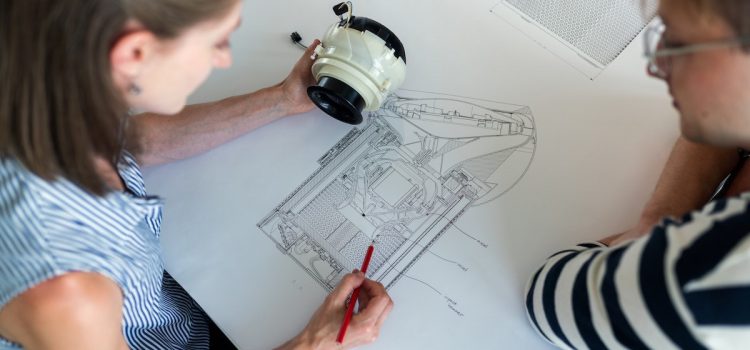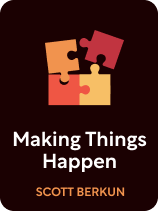

This article is an excerpt from the Shortform book guide to "Making Things Happen" by Scott Berkun. Shortform has the world's best summaries and analyses of books you should be reading.
Like this article? Sign up for a free trial here.
What is the design phase in project management? How should the project manager handle this stage of the project?
In Scott Berkun’s book Making Things Happen, he explains what a manager can do during each phase of a project to ensure its success. During the design phase in project management, he says it’s important for the manager to foster the design team’s creativity.
Read on to learn Berkun’s tips for handling the design phase in project management.
Project Design Phase
According to Scott Berkun’s book Making Things Happen, once you know what the project must accomplish (i.e. the planning phase), you can then move on to the design phase in project management. This phase answers how the team is going to accomplish the goal of your project. In the design phase, a team takes its requirements, vision document, and any other planning materials and starts coming up with ideas on how to make the product.
Because design is usually the part of the project that involves the most creativity, the design phase can be tricky for project management. In this article, we’ll go over some of Berkun’s tips, such as asking good questions and using prototypes, in order to handle the creative work of the design phase as a project manager.
(Shortform note: The author of The Design of Everyday Things points out that an important but sometimes overlooked part of the design process is making sure you’re solving the right problem. Bad designers may look at requirements and focus on potential solutions, while good designers will first identify the underlying problem. A project manager should keep this in mind during the design and planning phase, as proper planning can provide designers with the information they need to identify the right problem.)
Ask Targeted Questions
Berkun argues that in project management, asking the right questions can help foster creativity in the design phase. In general, questions can lead a design team in one of two directions: to think more narrowly, or to think more broadly about the project.
A narrowing question can help a team home in on what’s important and reinvigorate creative energy. Creative work can be bogged down by trying to solve too many problems at once, so asking a question that narrows focus can get a project moving in the right direction. For example, a design team hoping to make a cheaper vehicle may try to do so by making every part slightly cheaper to produce, which dilutes focus and stalls the project. A project manager may ask, “What’s one part we could make drastically cheaper?” The team then decides to work on a more affordable engine, focusing their efforts in a single direction.
Alternatively, when a team is in a creative rut, a project manager may ask a question that helps designers explore new ideas or think about things from a broader perspective. When trying to make a reliable electric vehicle, a project manager may ask, “In what areas can we improve reliability compared to our competitors?” This may help the team to come up with many viable ideas for producing a reliable car.
| Contradictory Approaches to Creative Work Berkun’s creative advice for the design phase in project management involves asking questions on opposite ends of the specificity spectrum (narrow and broad). In Creativity, Inc., Pixar co-founder Ed Catmull provides tips on how to maintain a creative workplace that mimics this creative duality. Catmull argues that people often have an inflexible perspective that can stifle creativity. To help go beyond these inflexible perspectives, Catmull advises creating an experimental space where you can explore ideas and take risks without fear of failure. Another tip Catmull recommends is to create clear boundaries for a team to work within. Though on the surface this may seem to limit a team’s perspective even further, it can actually help with creative work because limiting options can help people come up with unique ideas. |
Use Prototypes
According to Berkun’s project management advice, using prototypes in the design phase can help answer questions or help a design team test a product’s technical viability. When a team has an idea worth exploring further but isn’t ready to fully commit to it, prototypes can be especially useful. There are several different ways to go about prototyping, and which one is best will depend on the project. In general, the more complex the prototype, the more questions it’ll be able to answer. Let’s explore a few different prototyping methods a project manager may use:
Several small prototypes: When you have many potential designs, making several smaller, less sophisticated prototypes in the beginning can help you decide which one might work best.
Combine the best ideas: Alternatively, if you have multiple designs, take the best ideas from each design, combine them into one prototype, and see what works and what doesn’t.
Determine what needs to be tested the most: Figure out what aspects of the design need to be tested the most and make one prototype that tests them all.
| Four Types of Prototypes The author of Inspired provides further insights into the usefulness of prototypes during the design phase in project management, particularly in the field of technology. Prototypes are useful because you can test out ideas or products without spending too much time, money, or energy. He describes four types of prototypes, which you can use in combination with the prototyping methods Berkun describes: Feasibility prototypes: These are meant to be as simple as possible while testing if building the product is possible. User Prototypes: These are nonfunctional simulations of the final product, meant to help visualize the product. Live-Data prototypes: These are functional but limited versions of the final product. They are meant to provide data on how well a product might sell. Hybrid prototypes: These are a combination of the other prototypes, meant to get customer feedback early in the product’s development. |

———End of Preview———
Like what you just read? Read the rest of the world's best book summary and analysis of Scott Berkun's "Making Things Happen" at Shortform.
Here's what you'll find in our full Making Things Happen summary:
- Answers to the questions you have about leadership and project management
- What managers can do at each phase of a project to ensure its success
- Why schedules are unreliable yet useful






